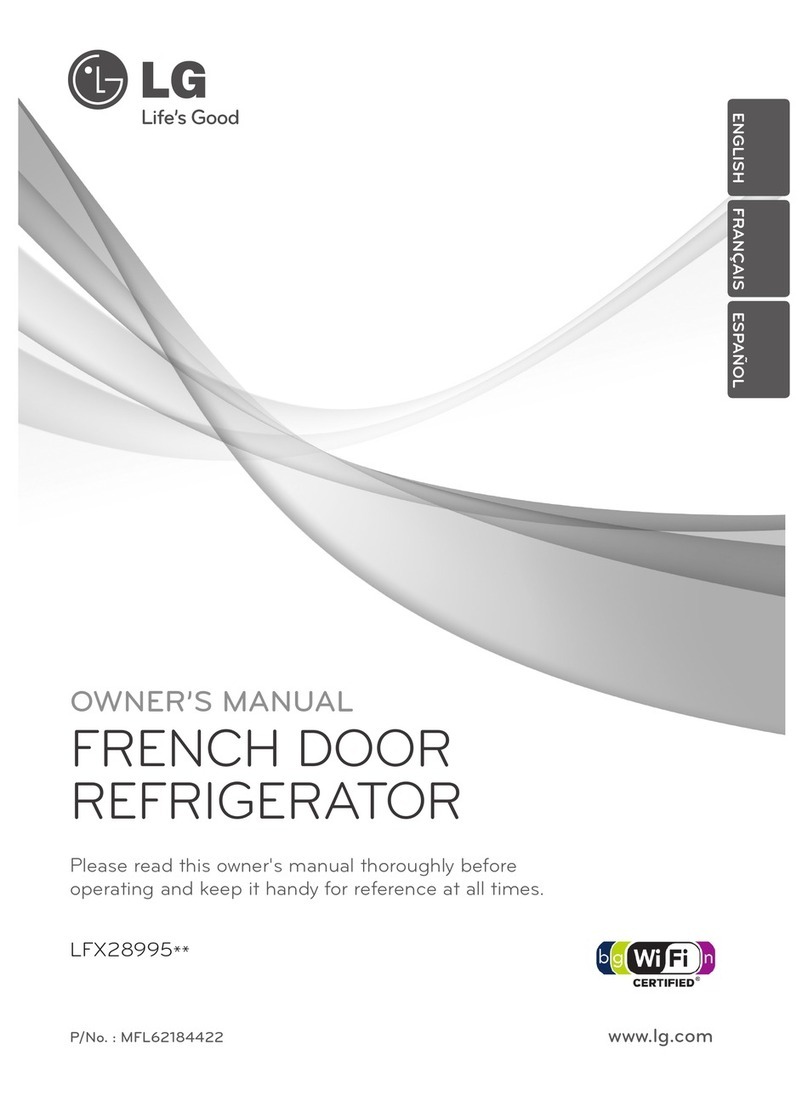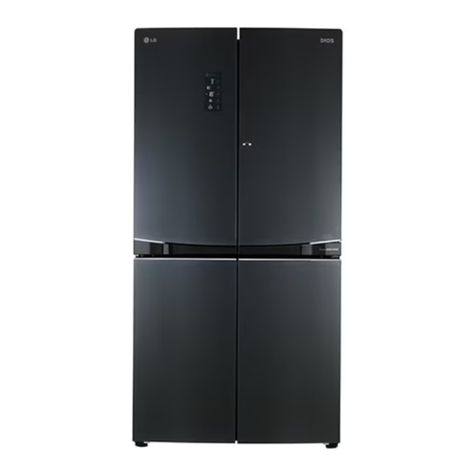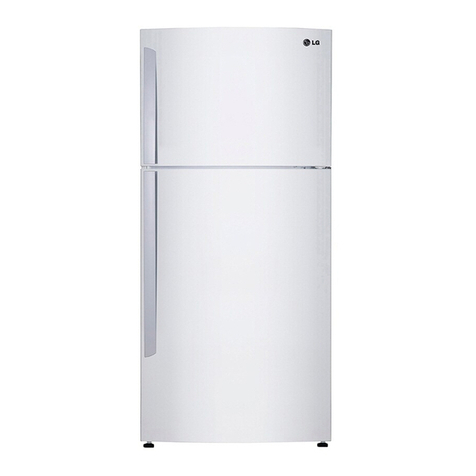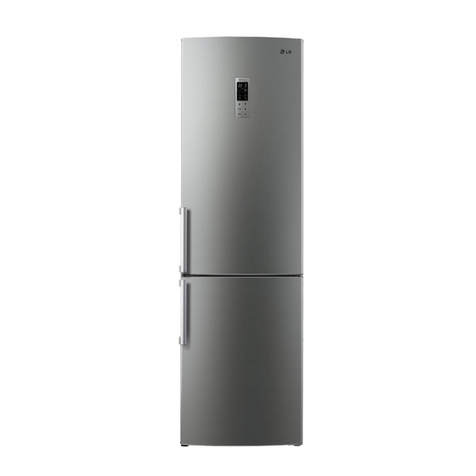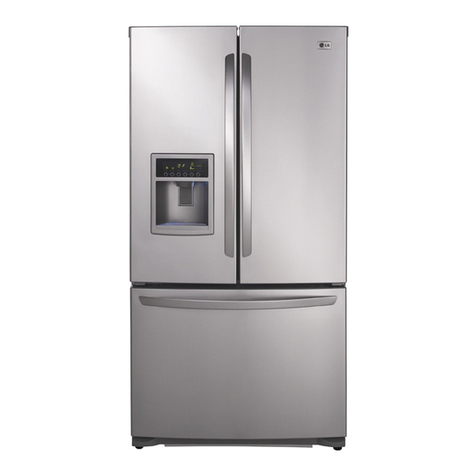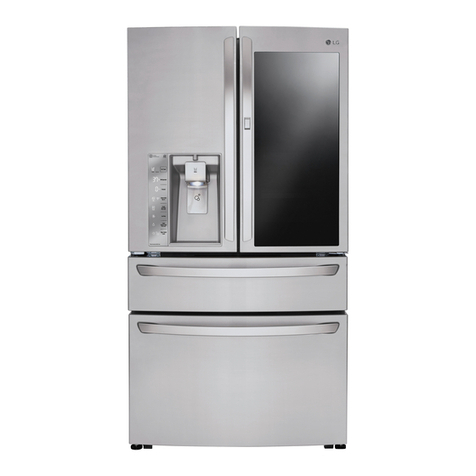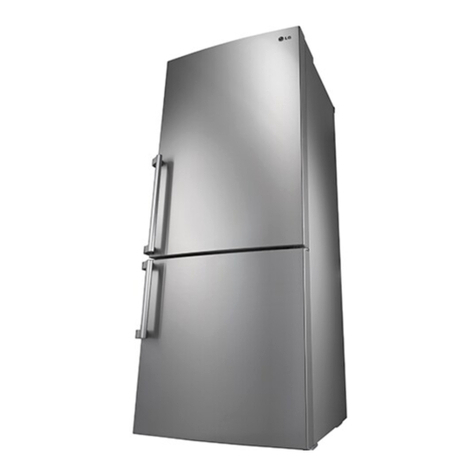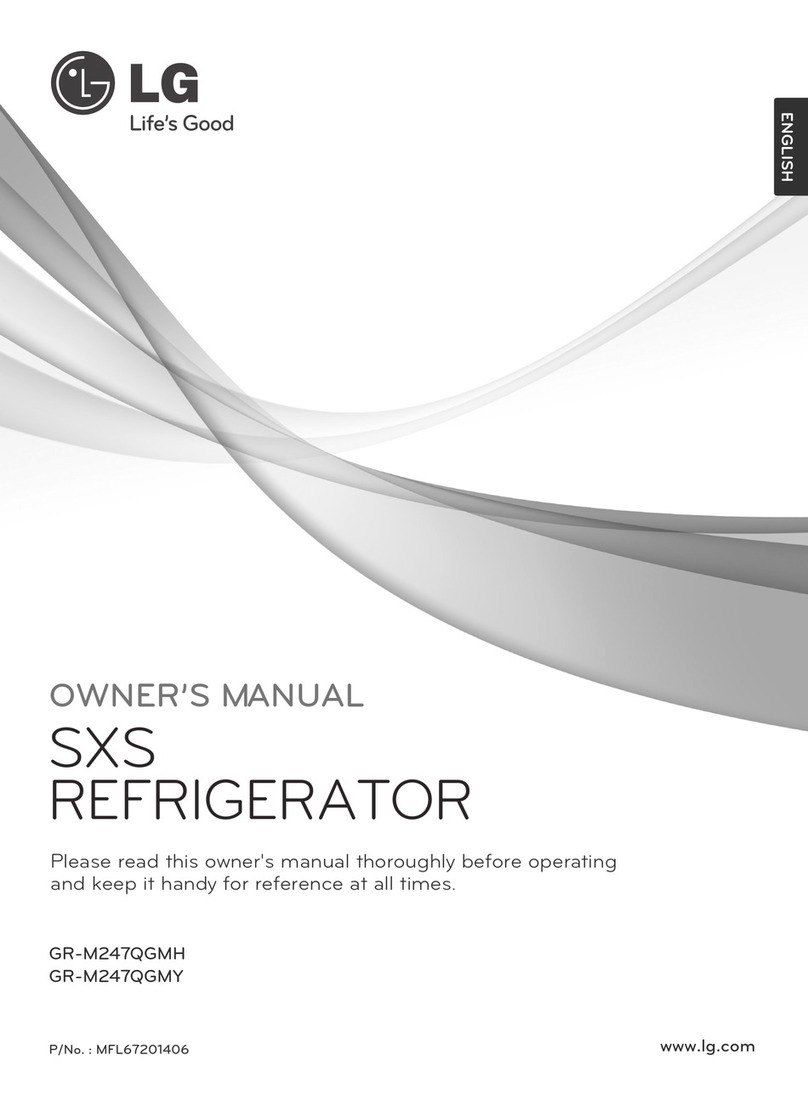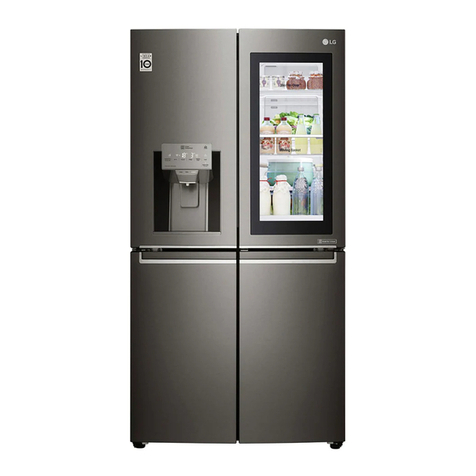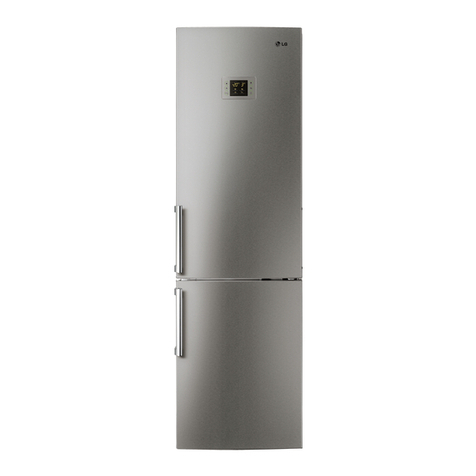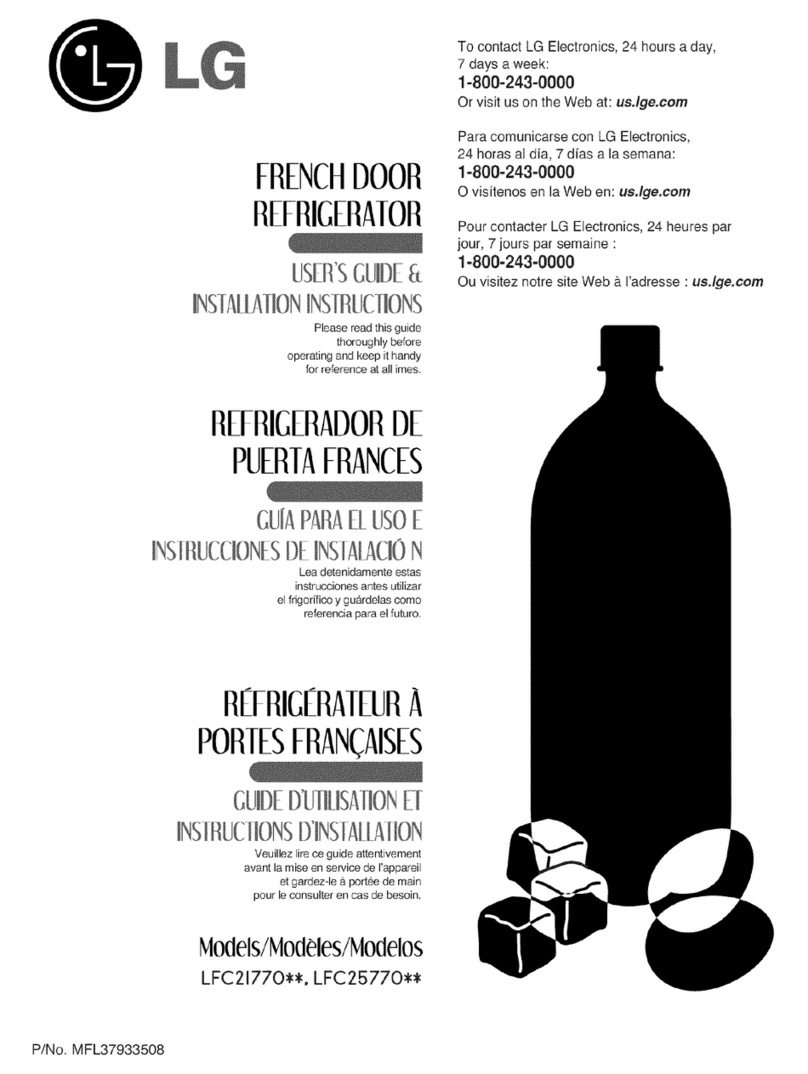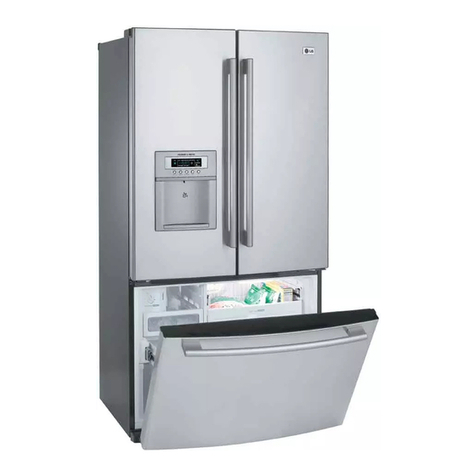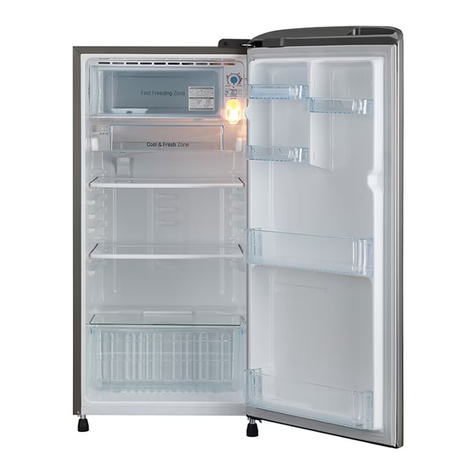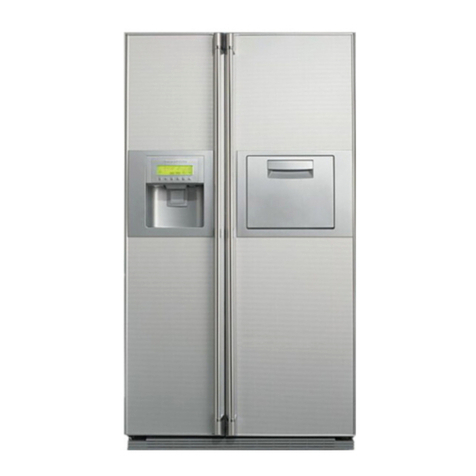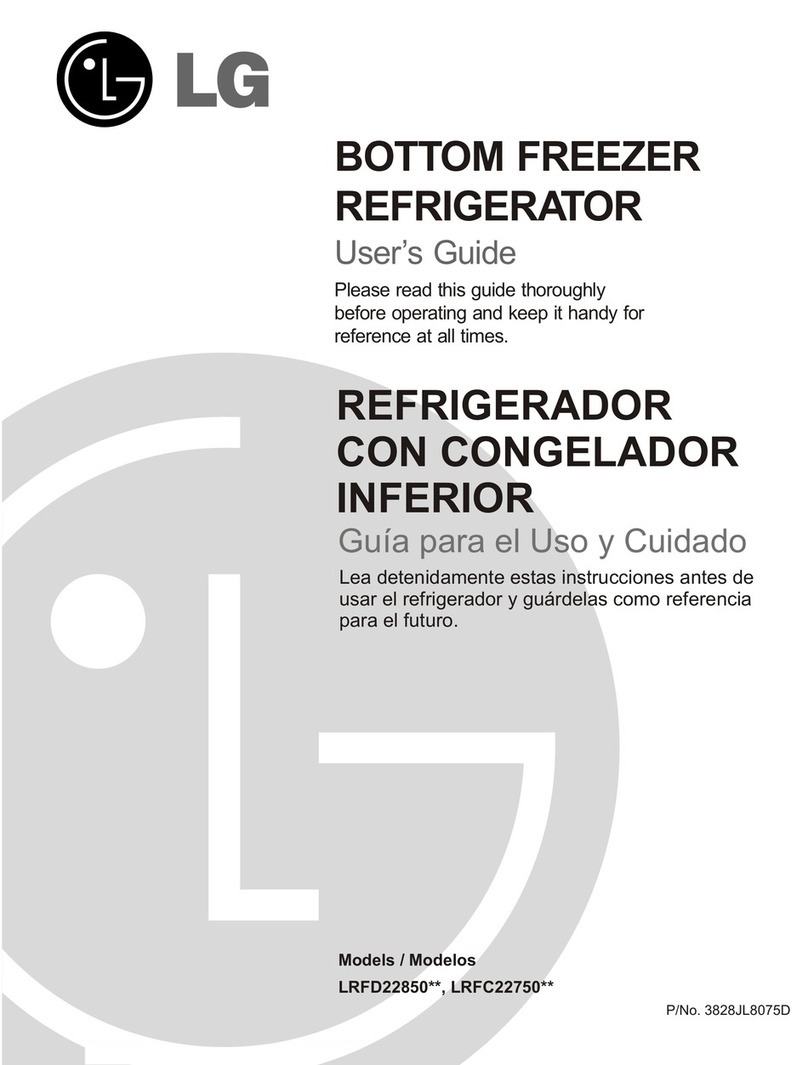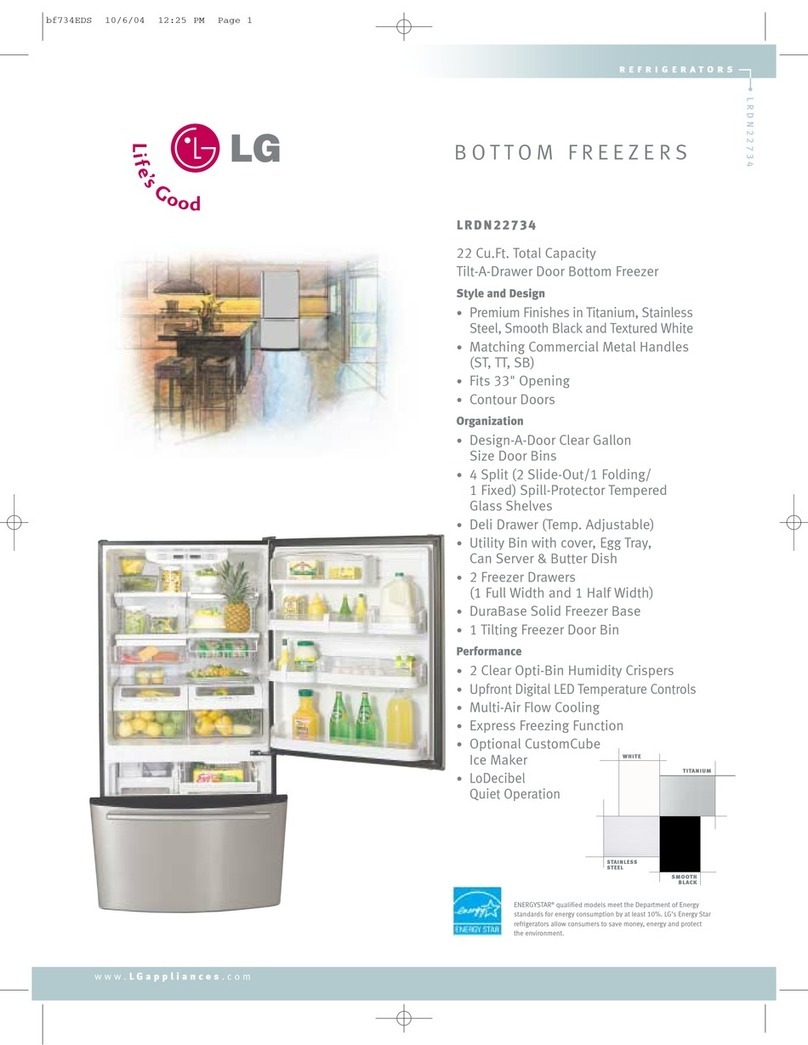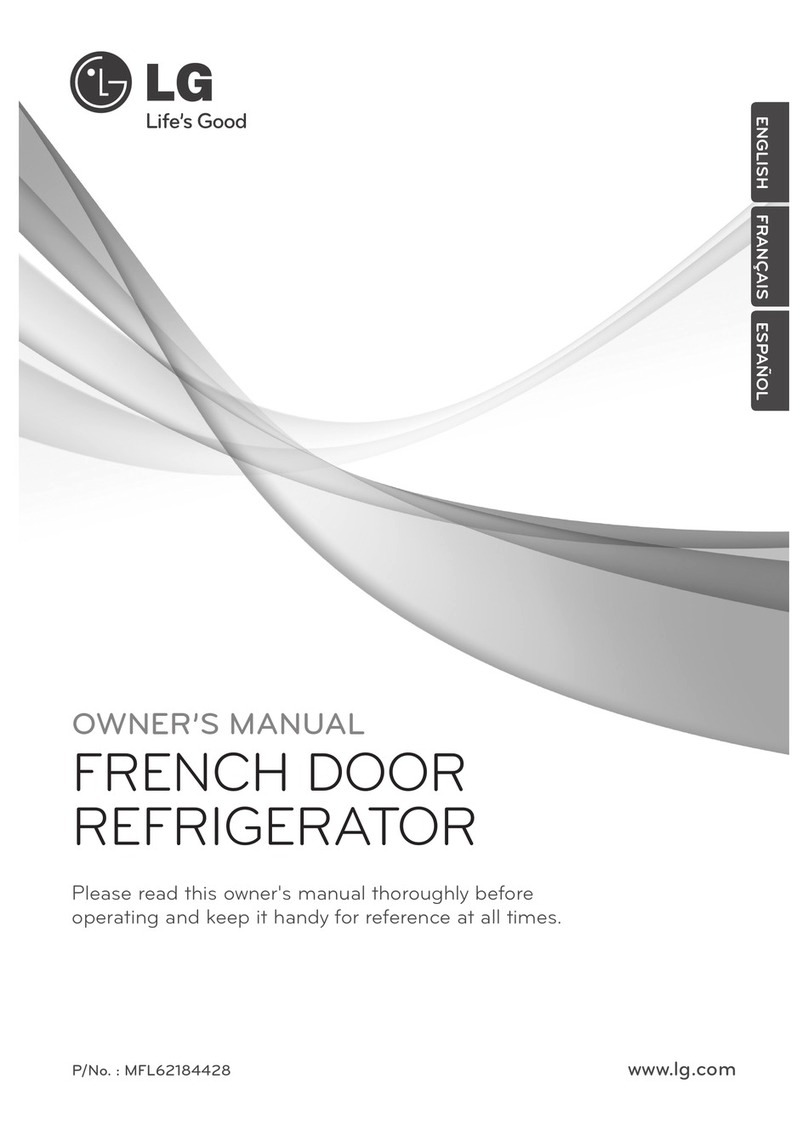WARNINGS AND PRECAUTIONS FOR SAFETY ................................................................................................................ 3
SPECIFICATIONS................................................................................................................................................................... 4
PARTS IDENTIFICATION....................................................................................................................................................... 5
HOW TO INSTALL THE REFRIGERATOR............................................................................................................................ 6
HOW TO ADJUST DOOR HEIGHT OF THE REFRIGERATOR.......................................................................................... 6
HOW TO INSTALL WATER PIPE......................................................................................................................................... 7
HOW TO CONTROL THE AMOUNT OF WATER SUPPLIED TO THE ICEMAKER........................................................... 8
COOLING CYCLE AND REFRIGERANT............................................................................................................................. 10
FUNCTIONS AND OPERATION PRINCIPLES OF MAIN PARTS....................................................................................... 12
COMPRESSOR (RECIPROCATING TYPE)...................................................................................................................... 12
OVER LOAD PROTECTOR............................................................................................................................................... 12
POSITIVE TEMPERATURE COEFFICIENT (PTC)............................................................................................................ 12
SWITCH (DOOR, HOME BAR, DISPENSER)................................................................................................................... 13
MOTOR .............................................................................................................................................................................. 14
SOLENOID......................................................................................................................................................................... 14
HEATER ............................................................................................................................................................................. 15
VALVE................................................................................................................................................................................. 17
ICEMAKER AND DISPENSER OPERATION PRINCIPLE AND REPAIR METHOD........................................................... 18
MICOM FUNCTION .............................................................................................................................................................. 24
EXPLANATION FOR MICOM CIRCUIT .............................................................................................................................. 32
CIRCUIT................................................................................................................................................................................ 52
PROBLEM DIAGNOSIS ....................................................................................................................................................... 53
PROBLEM SHOOTING...................................................................................................................................................... 53
FAULTS .............................................................................................................................................................................. 63
COOLING CYCLE HEAVY REPAIR................................................................................................................................... 80
HOW TO DEAL WITH CLAIMS.......................................................................................................................................... 87
HOW TO DISASSEMBLE AND ASSEMBLE(REFRIGERATOR SECTION)....................................................................... 92
DOOR................................................................................................................................................................................. 92
HANDLE............................................................................................................................................................................. 93
DEODORIZER.................................................................................................................................................................... 93
SHROUD, GRILLE FAN..................................................................................................................................................... 94
CONTROL BOX, R............................................................................................................................................................. 94
CASE PWB......................................................................................................................................................................... 94
ICEMAKER ASSEMBLY..................................................................................................................................................... 95
DISPENSER....................................................................................................................................................................... 96
WATER TANK AND WATER LINE...................................................................................................................................... 97
DIGITAL SECTION LAYOUT................................................................................................................................................ 98
DIGITAL PARTS MANUAL................................................................................................................................................. 101
TROUBLESHOOTING FOR THE DIGITAL FUNCTION SECTION ................................................................................... 122
EXTERNAL EXTENSION PORT ........................................................................................................................................ 131
HOW TO DISASSEMBLE AND ASSEMBLE(DIGITAL SECTION) ................................................................................. 132
EXPLODED VIEW .............................................................................................................................................................. 136
DIGITAL SECTION COMPONENTS .................................................................................................................................. 144
REPLACEMENT PARTS LIST .......................................................................................................................................... 146
CONTENTS
- 2 -
